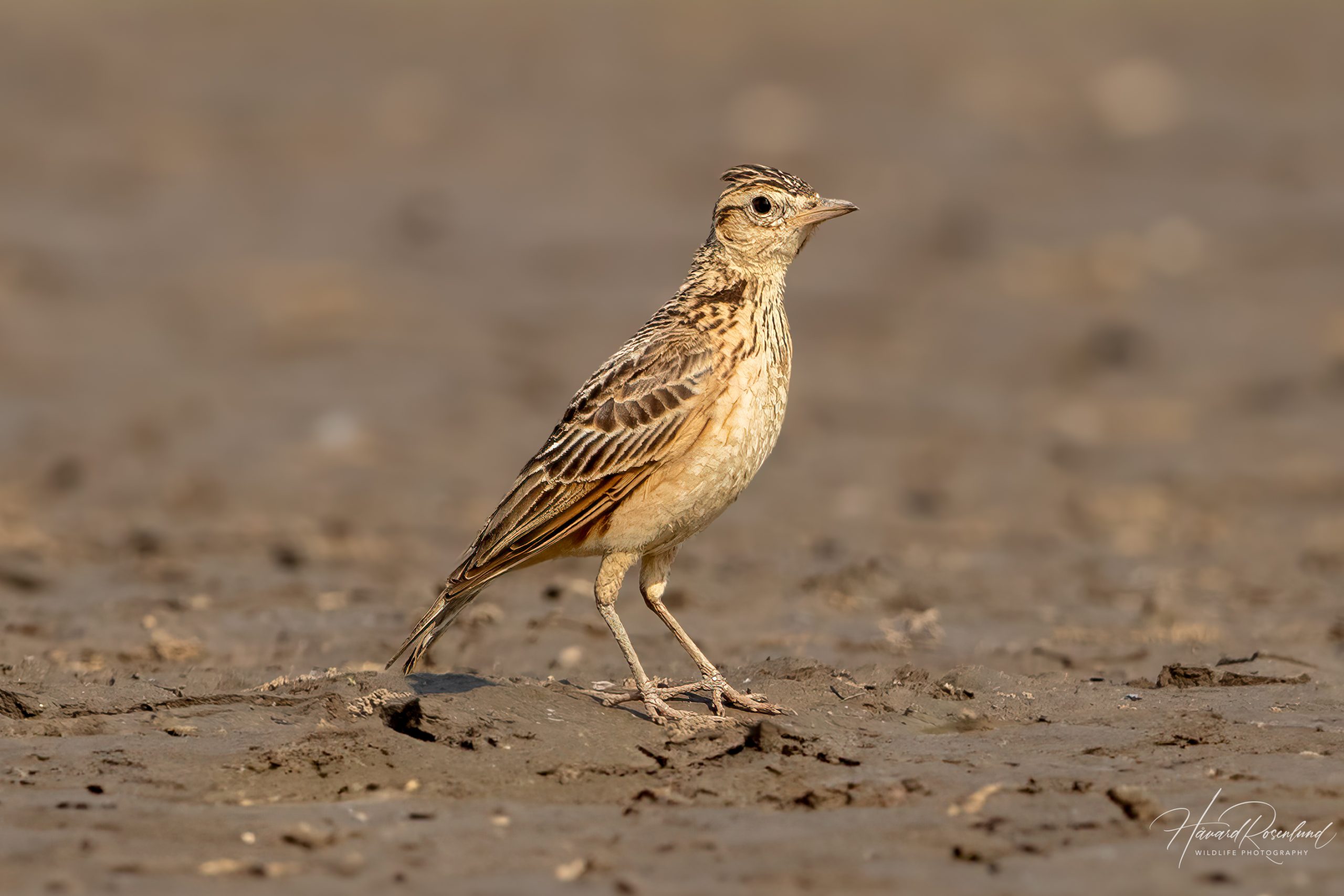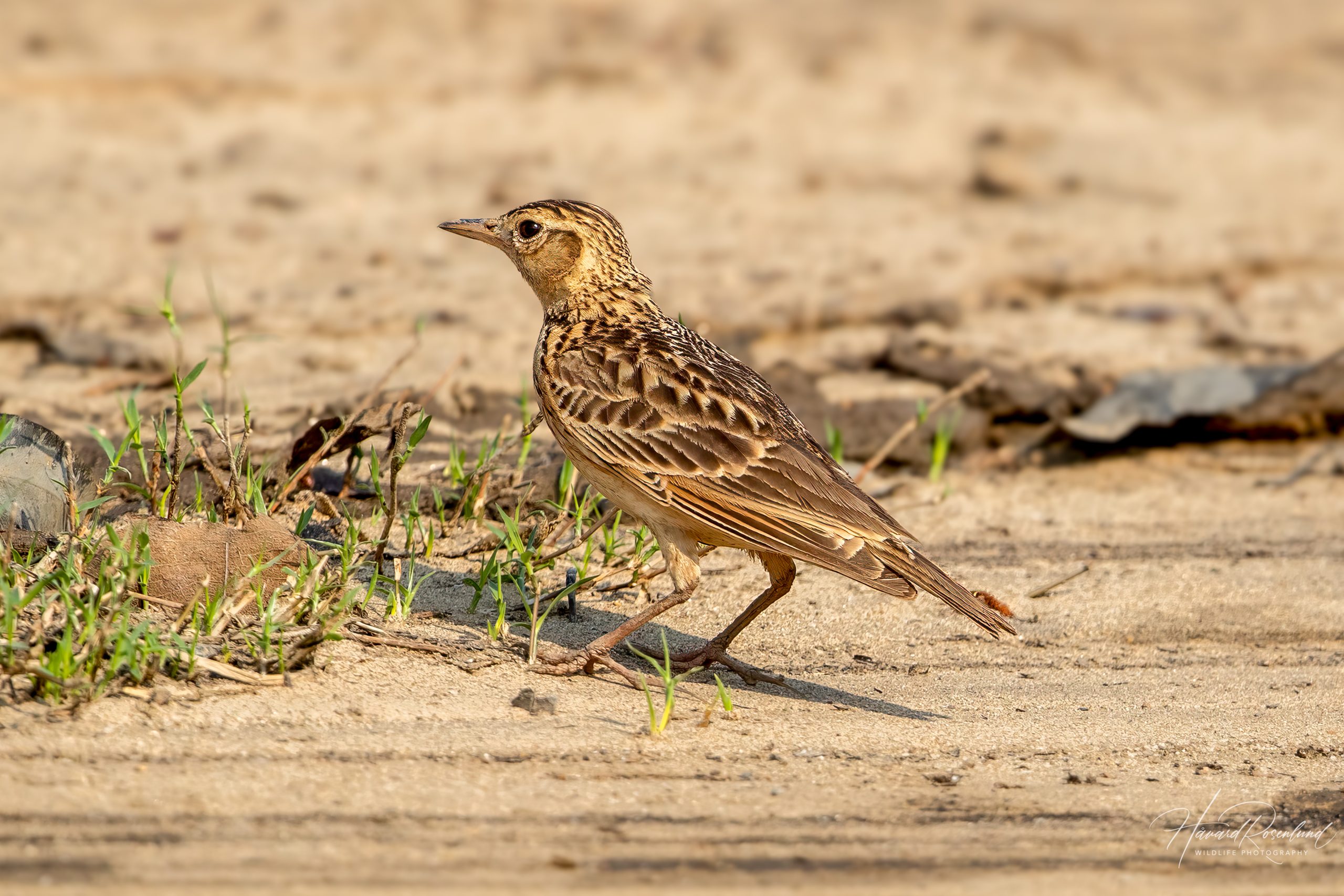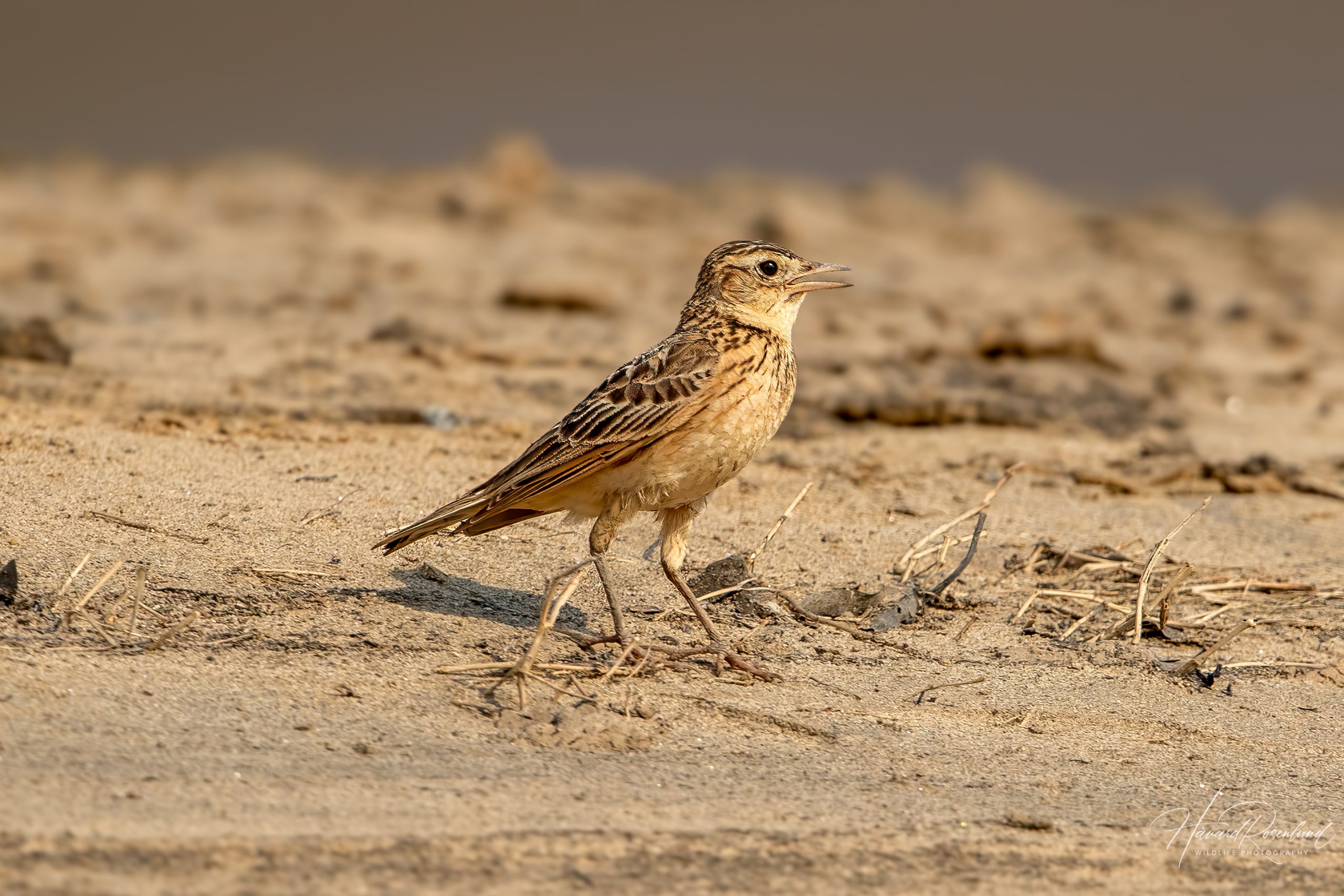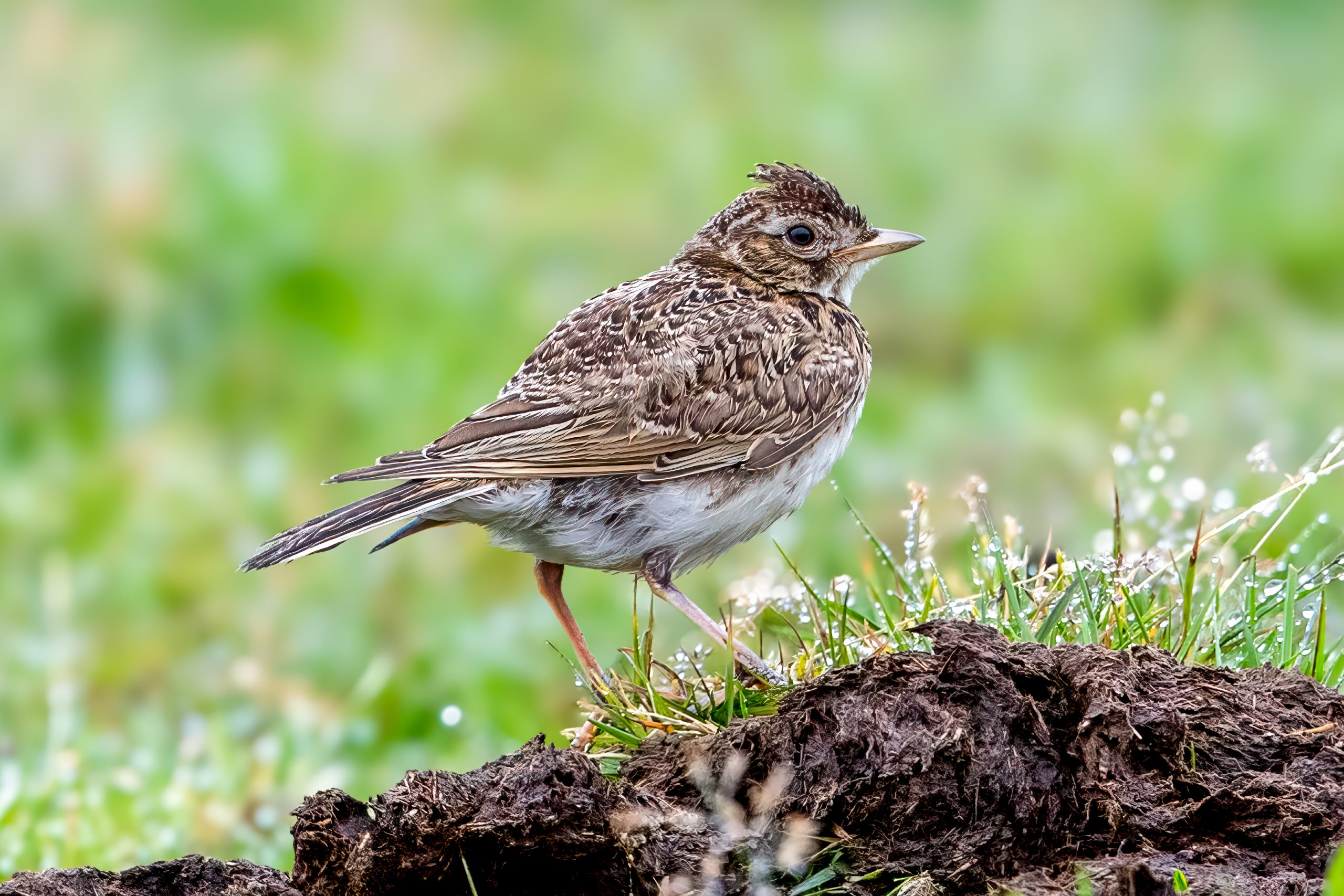Description
The Oriental skylark (Alauda gulgula) is a small passerine bird primarily found across the southern regions of Asia. The species is characterized by its relatively modest size, measuring about 15-18 cm (6-7 in) in length. The bird has a brownish upper body with streaked patterns, and a buff-colored underside. Its tail is short and slightly forked, and it has a notable crest on its head, though this crest is not always visible. The Oriental skylark is somewhat similar to the Eurasian skylark (Alauda arvensis), but it is typically smaller, has a shorter tail, and a longer and more pointed bill.
Diet & habitat
Oriental skylarks thrive in open grasslands, agricultural fields, and semi-arid regions. They are ground-dwelling birds, usually found in areas with short vegetation where they can forage for food. Their diet primarily consists of seeds, grains, and small insects, such as beetles and caterpillars. They use a combination of walking and short, hopping movements to search the ground for food. When feeding on insects, they often perform quick, agile pecks at the ground, displaying remarkable precision.
Migration
The Oriental skylark exhibits partial migratory behavior. While populations in the northernmost parts of its range, such as in Central Asia and northern China, tend to migrate southwards during the winter months, those in the more temperate regions of its range are largely resident. The migratory distances are generally short, often within the same region, or from higher altitudes to lower altitudes in response to colder weather.
Nesting
The breeding season of the Oriental skylark varies with its geographical location but generally falls between March and August. The bird is known for its elaborate courtship displays, which include ascending flights accompanied by singing. Nesting typically occurs on the ground, with nests being simple structures made from grass and other vegetation, often concealed in tufts of grass or under small shrubs. The female lays between 2 to 5 eggs, which are incubated for about 11 to 13 days. Both parents are involved in feeding the chicks, which fledge approximately 9 to 12 days after hatching.
Status
The Oriental skylark is currently listed as least concern by the IUCN Red List. Although the species is widespread and common in many parts of its range, it faces potential threats from habitat loss due to agricultural expansion and urban development. However, its adaptability to modified habitats such as agricultural fields has helped it maintain mostly stable population levels.







